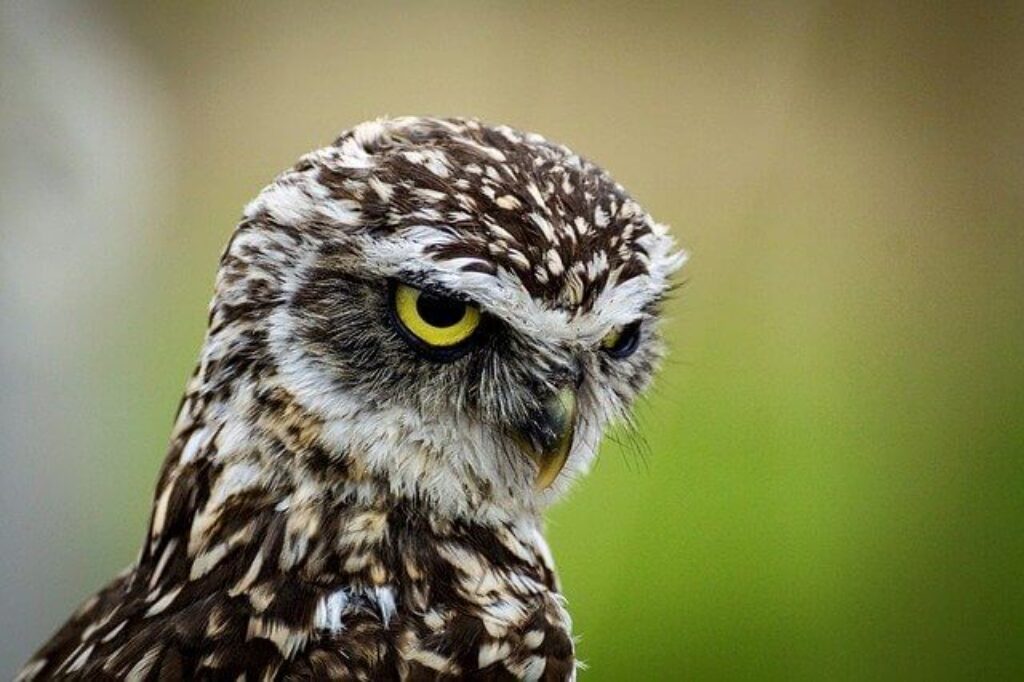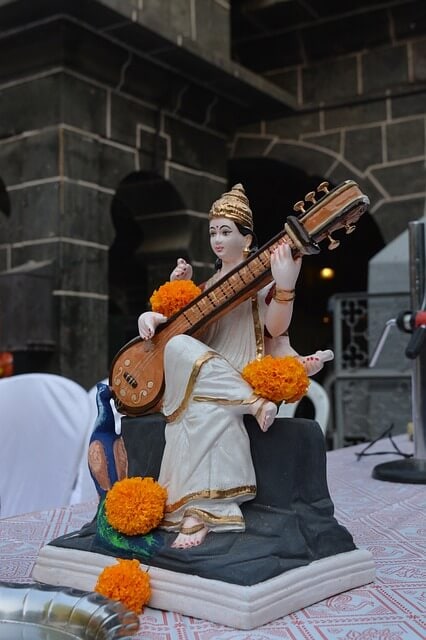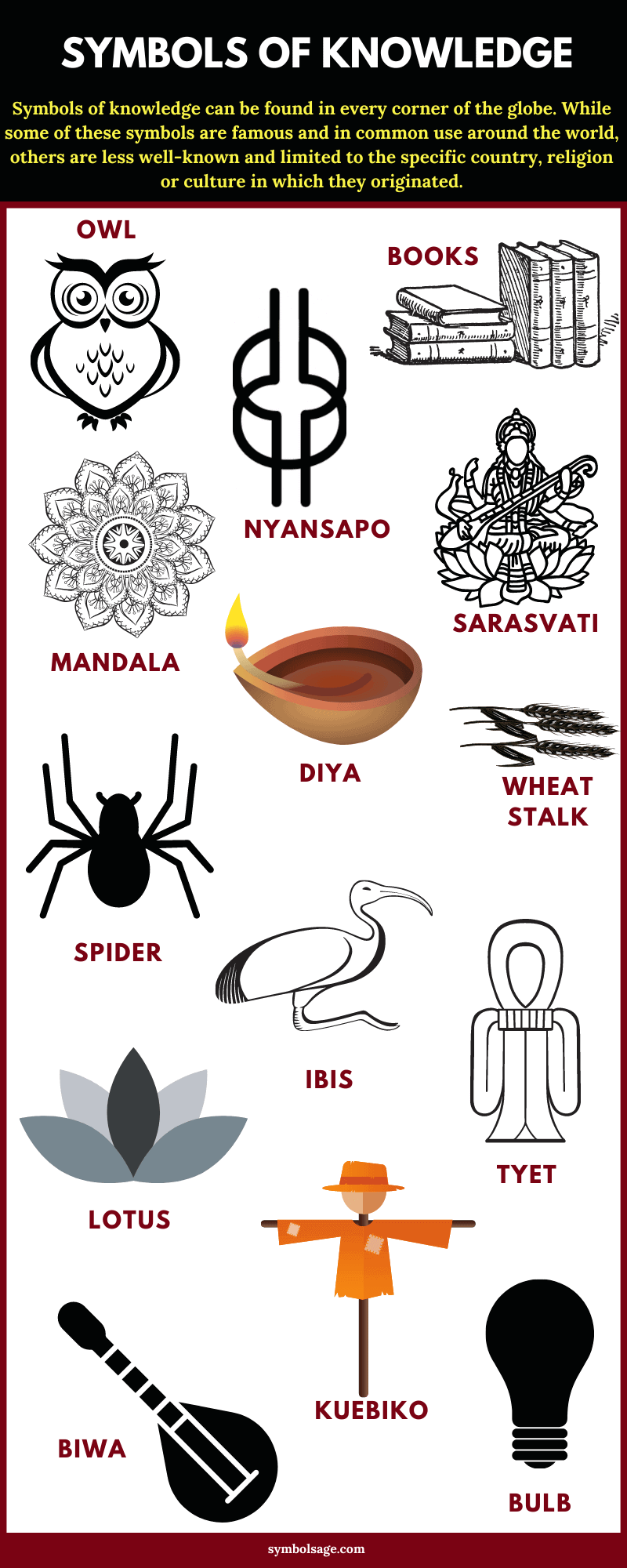
Table of Contents
Symbols of knowledge, perception and insight can be found in every corner of the globe. While some of these symbols are famous and in common use around the world, others are less well-known and limited to the specific country, religion or culture in which they originated.
In this article, we’ll be describing some of the most famous symbols of knowledge including their symbolism, where they came from and how they’re used today.
1. Owl

Possibly the most recognizable symbol of wisdom, the owl has been used since ancient times to represent wisdom and knowledge. In ancient Greece, the owl was a symbol of Athena, goddess of wisdom.
The ‘wise old owl’ is able to see at night, symbolizing its ability to perceive what others do not. It has large eyes which take in the world, and its silent nature allows it to observe the world around it. The ancient Greeks thought that owls had a special light within it that allowed it to navigate the world at night, which strengthened its association with wisdom and illumination.
2. Book

Books have been associated with learning, knowledge and insight since ancient times. Many education logos feature books, while most religions feature their holy books as the symbol of enlightenment and knowledge. Objects associated with books and writing, such as pens, paper, plumes and scrolls are also often used as symbols of knowledge.
3. Light Bulb

Since its invention, light bulbs have been used to represent ideas, creativity and knowledge. This comes from its association with light, which is used to represent understanding.
To see the light means to understand, while the phrases the lights aren’t on or dim-witted means that a person doesn’t understand. As the light bulb gives us light, and helps us to understand, it’s the ideal symbol of knowledge.
4. Lotus

The lotus flower is often used in Eastern spirituality and Buddhism to represent wisdom, enlightenment and rebirth. This association comes from the lotus’ ability to stay rooted in muck and filth and yet to rise above its environment and bloom in beauty and purity. The lotus is ever reaching upwards, facing the sun. In this context, the lotus represents a person reaching towards wisdom and enlightenment, transcending attachment to material objects and physical desires.
5. Mandala

The circle of Mandala is a geometric pattern, representing the universe. It’s a highly important symbol in Buddhism, with several interpretations. One of these meanings is wisdom. The outer circle of the Mandala features a ring of fire representing wisdom.
Both fire and wisdom signify impermanence: a fire, no matter how great will eventually die out just like life itself. In the same way, one’s wisdom lies in understanding and appreciating the state of impermanence (nothing lasts forever).
While the fire burns away all impurities, moving through fire can burn away one’s ignorance, which is seen as an impurity, leaving the person knowledgeable and wiser.
6. Mimir
The Mimir is a famous figure in North mythology, known for his extensive knowledge and wisdom. A counsellor of the gods, Mimir was beheaded by Odin, who preserved the head by embalming it with herbs.
Odin then spoke charms over the head, giving it the power to speak so that it could counsel him and reveal to him all secrets of the universe.
The head of Mimir has turned into a famous, traditional Norse symbol of knowledge and wisdom. It’s said that Odin still continues to seek guidance and counsel from the head.
7. Spider

To the Akan people of Ghana, West Africa, the spider is a symbol of the great god Anansi, who is said to appear in spider-form. Anansi is considered the god of all knowledge. According to Akan folklore, he was an extremely clever trickster who wanted to collect more knowledge and didn’t want to share it with anyone else.
In the New World, Anansi in his humanoid spider form became a symbol of survival and resistance for the slaves, because of how he turned the tide on his persecutors by using his cunning and tricks. Thanks to him, the spider remains an important symbol of knowledge as well as creativity, hard work and creation.
8. Saraswati

Saraswati is a famous Hindu goddess of knowledge, art, wisdom and learning. She carries a pustaka (a book) symbolizing true knowledge, and a pot of water, which is said to symbolize soma, a drink that takes one towards knowledge.
Her very name means she who possesses water, she who possessed speech or knowledge that purifies. Saraswati is often portrayed as a beautiful young woman dressed in a white sari, symbolizing that she’s the embodiment of knowledge, and seated on a white lotus which symbolizes knowledge and supreme reality.
9. Biwa
The Biwa is a Japanese musical instrument similar to a flute. It’s commonly associated with Benten, the Japanese Buddhist goddess of all things flowing such as knowledge, water, music and words.
Due to its connection to Benten, this instrument has turned into a symbol of knowledge and wisdom in Japanese culture.
10. Gamayun
A Gamayun is a legendary being in Slavic folklore, depicted in the form of a bird with a woman’s head. With its prophetic abilities, the Gamayun lives on an island in the east, delivering prophecies and divine messages to people.
Although the Gamayun is a Slavic figure, she was inspired by Greek mythology. She knows everything about all creation including heroes, mortals and gods. Because of her extensive knowledge and ability to see the future and tell fortunes she has long been used as a symbol of knowledge and wisdom.
11. Stalk of Wheat

The stalk of wheat is viewed as a symbol of knowledge in some cultures due to its association with the goddess of knowledge – Nisaba. In the ancient cities of Eres and Umma in Sumeria, the deity Nisaba was initially worshipped as the goddess of grain.
However, over time, as writing became increasingly important for the purpose of documenting the grain trade as well as other staples, Nisaba became associated with knowledge, writing, accounting and literature. Because the stalk of grain is one of her symbols, it came to represent knowledge.
12. Tyet

The Tyet is a popular Egyptian symbol associated with Isis, a major goddess in the ancient Egyptian religion. She was well-known for her magical powers and mostly for her great knowledge and was described as being ‘cleverer than a million gods’.
Her symbol, the Tyet, represents a knotted cloth which is similar in shape to the Ankh, another famous Egyptian hieroglyph which is symbolic of life.
In the Egyptian New Kingdom, it was a common practice to bury mummies with a Tyet amulet to protect them from all harmful things in the afterlife. Due to its association with Isis, the Tyet became a symbol of knowledge.
13. Ibis of Thoth

Thoth was an ancient Egyptian god of knowledge, wisdom and writing who was significant in Egyptian mythology, playing several roles like providing judgment to the deceased, maintaining the balance of the universe and serving as the gods’ scribe.
Originally Thoth, who was a moon god, was represented by a ‘moon disk’ but later on he was depicted as an Ibis, a sacred bird in ancient Egyptian religion.
The Ibis was already a famous symbol of wisdom and knowledge and was much revered by the Egyptians. The Ibis of Thoth became the patron of the highly educated scribes who had the responsibility of the country’s administration.
14. Nyansapo

The Nyansapo is a symbol of the people of West African Akan people. Meaning ‘wisdom knot’, Nyansapo represents the concepts of knowledge, ingenuity, intelligence and patience.
This symbol is usually employed to express the belief that if a person is knowledgeable and wise, they have the potential to choose the best methods of achieving their goals.
Here, the word ‘wise’ is used in a specific context, meaning ‘broad knowledge, experience and learning as well as the ability to apply these to practical ends’.
15. Kuebiko
In Japanese mythology, the Kuebiko is a Shinto deity of knowledge, agriculture and scholarship, represented as a scarecrow who is aware of his surroundings but unable to move.
Although he doesn’t possess the ability to walk, he stands still all day long and observes everything that happens around him. This quiet observation gives him knowledge of the world. The Kuebiko has a shrine dedicated to him in Sakurai, Nara, known as the Kuebiko shrine.
16. Diya

A diya is an oil lamp native to the Indian subcontinent and often used in Zoroastrian, Hindu, Sikh and Jain religious festivals such as the Kushti ceremony or Diwali. Every part of the Diya has meaning.
The represents sins and the wick represents the Atman (or the self). The light of the diya symbolizes knowledge, truth, hope and victory of good over evil.
The message it gives is that during the process of attaining enlightenment (represented by light), one’s self must be rid of all worldly passions just like how a light wick would burn away oil.
Summing Up…
Throughout history, symbols have been used as a method of conveying meaning and instilling emotions in a way that cannot be achieved by an outright description or explanation.
The above symbols continue to be used around the globe to represent knowledge and wisdom, with many depicted in artwork, jewelry, tattoos and other decorative items.









